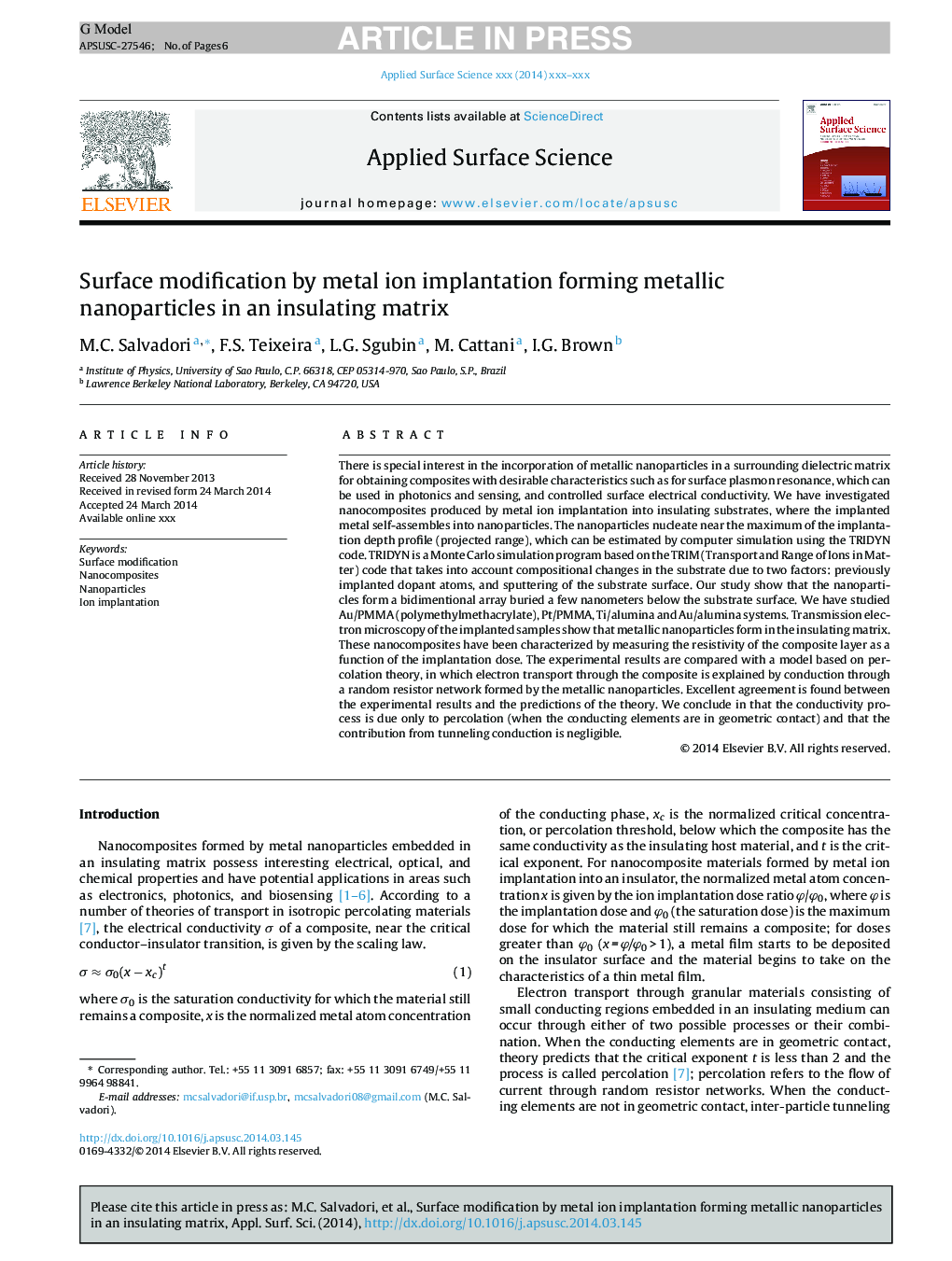| کد مقاله | کد نشریه | سال انتشار | مقاله انگلیسی | نسخه تمام متن |
|---|---|---|---|---|
| 5356659 | 1503654 | 2014 | 6 صفحه PDF | دانلود رایگان |
عنوان انگلیسی مقاله ISI
Surface modification by metal ion implantation forming metallic nanoparticles in an insulating matrix
ترجمه فارسی عنوان
اصلاح سطحی توسط کاشت یون فلز ایجاد نانوذرات فلزی در یک ماتریس عایق
دانلود مقاله + سفارش ترجمه
دانلود مقاله ISI انگلیسی
رایگان برای ایرانیان
کلمات کلیدی
اصلاح سطح، نانوکامپوزیت ها، نانوذرات، ایمپلنت یون
موضوعات مرتبط
مهندسی و علوم پایه
شیمی
شیمی تئوریک و عملی
چکیده انگلیسی
There is special interest in the incorporation of metallic nanoparticles in a surrounding dielectric matrix for obtaining composites with desirable characteristics such as for surface plasmon resonance, which can be used in photonics and sensing, and controlled surface electrical conductivity. We have investigated nanocomposites produced by metal ion implantation into insulating substrates, where the implanted metal self-assembles into nanoparticles. The nanoparticles nucleate near the maximum of the implantation depth profile (projected range), which can be estimated by computer simulation using the TRIDYN code. TRIDYN is a Monte Carlo simulation program based on the TRIM (Transport and Range of Ions in Matter) code that takes into account compositional changes in the substrate due to two factors: previously implanted dopant atoms, and sputtering of the substrate surface. Our study show that the nanoparticles form a bidimentional array buried a few nanometers below the substrate surface. We have studied Au/PMMA (polymethylmethacrylate), Pt/PMMA, Ti/alumina and Au/alumina systems. Transmission electron microscopy of the implanted samples show that metallic nanoparticles form in the insulating matrix. These nanocomposites have been characterized by measuring the resistivity of the composite layer as a function of the implantation dose. The experimental results are compared with a model based on percolation theory, in which electron transport through the composite is explained by conduction through a random resistor network formed by the metallic nanoparticles. Excellent agreement is found between the experimental results and the predictions of the theory. We conclude in that the conductivity process is due only to percolation (when the conducting elements are in geometric contact) and that the contribution from tunneling conduction is negligible.
ناشر
Database: Elsevier - ScienceDirect (ساینس دایرکت)
Journal: Applied Surface Science - Volume 310, 15 August 2014, Pages 158-163
Journal: Applied Surface Science - Volume 310, 15 August 2014, Pages 158-163
نویسندگان
M.C. Salvadori, F.S. Teixeira, L.G. Sgubin, M. Cattani, I.G. Brown,
